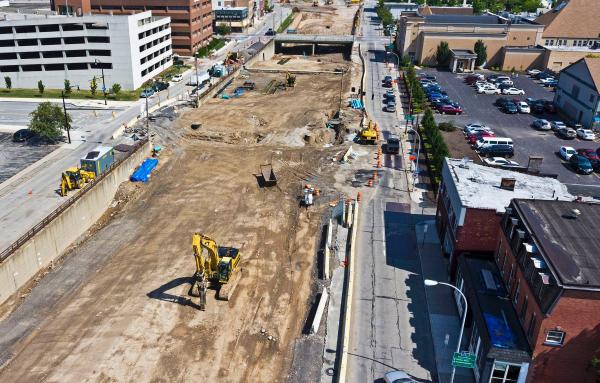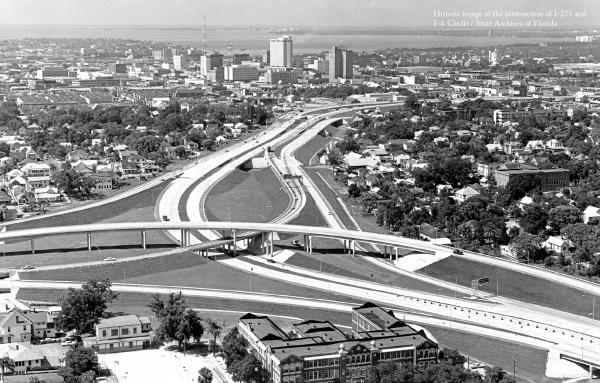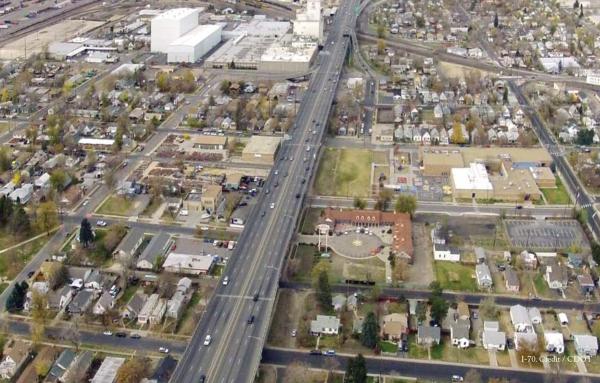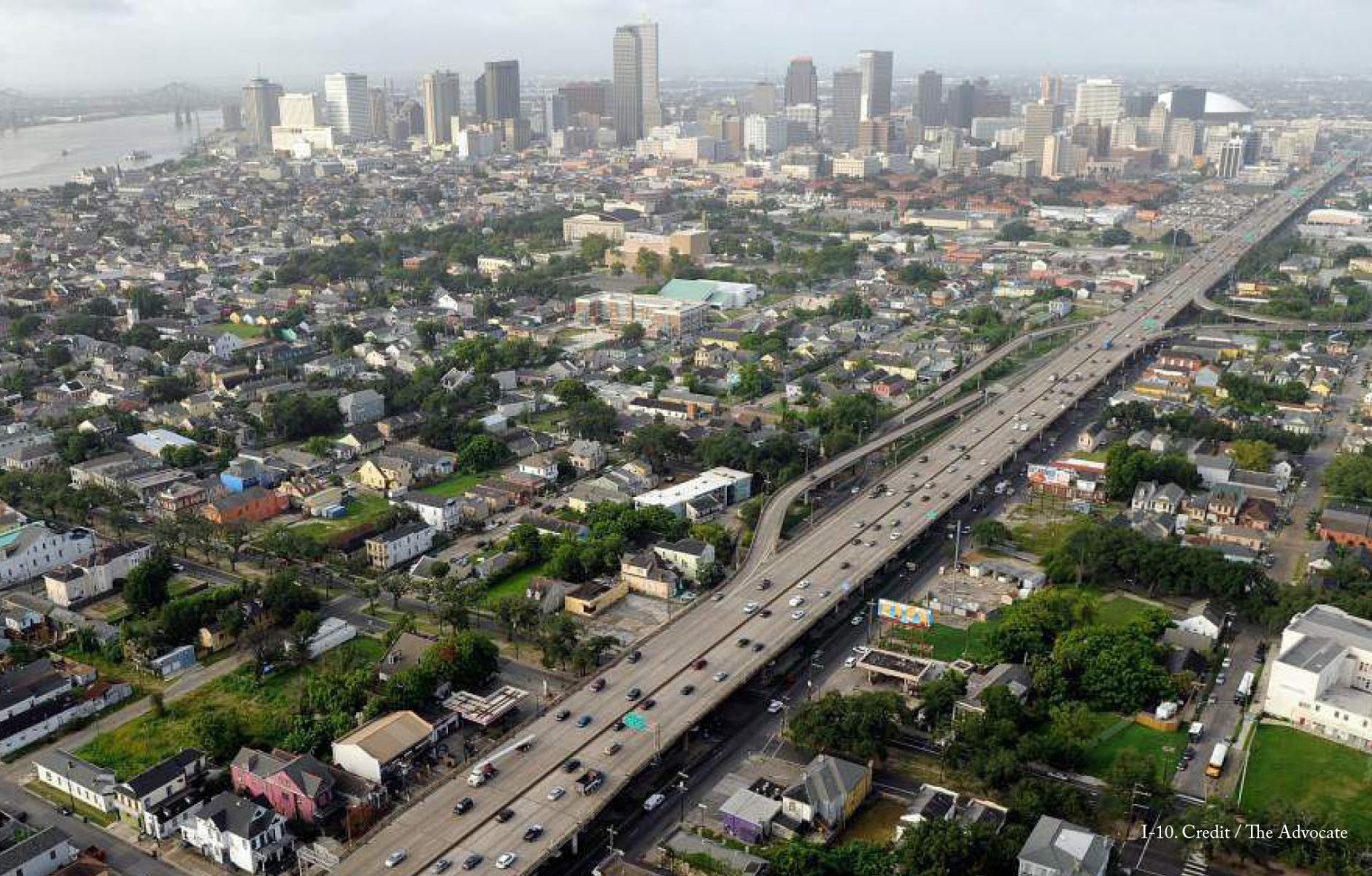
Restoring the heart of Treme
Note: CNU's sixth biennial Freeways Without Futures report was released April 3. The Claiborne Expressway was one of ten highways listed.
In 1966, French Quarter residents averted the proposed construction of an elevated expressway through their neighborhood. The primarily African-American Tremé neighborhood was not so privileged. Despite staunch opposition from the community, the Claiborne Expressway was built over Claiborne Avenue, the much-beloved main boulevard and commercial backbone for Tremé. Now, those who came of age during the highway’s construction continue the fight to restore Claiborne Avenue and repair the damage caused to their neighborhood.
Today, Claiborne Avenue has been reduced to a frontage road for the expressway, but it had a significantly different character prior to 1966. Its wide, green median was the central public space for the African-American neighborhood and a gathering place for the community, with activities that ranged from pickup ball games to Mardi Gras parades. Claiborne Avenue was a source of community pride and the premier destination for shopping, leisure, and socializing. However, when plans for the Claiborne Expressway were revealed, the Tremé community did not have advocates in the city government to defend it.
Many community members whose friends and families opposed the original construction of the Claiborne Expressway still seek to return Claiborne Avenue to the vibrant street it once was. This includes removing the elevated expressway to restore the 100-foot median, the traffic circle at the intersection with St. Bernard Avenue, and connections to the neighborhood’s street grid. Deliberations have long centered on the expressway’s removal, and studies have demonstrated that the effect on New Orleans’ local traffic would be negligible, while through-traffic would experience an increase in travel time of only two to six minutes. In 2014, then-Mayor Mitch Landrieu explored removal as an option, but eventually backed away from this alternative. Discussions stalled. The mayor then proposed building a marketplace underneath the polluting highway, which received a less-than-enthusiastic reception from neighborhood residents.
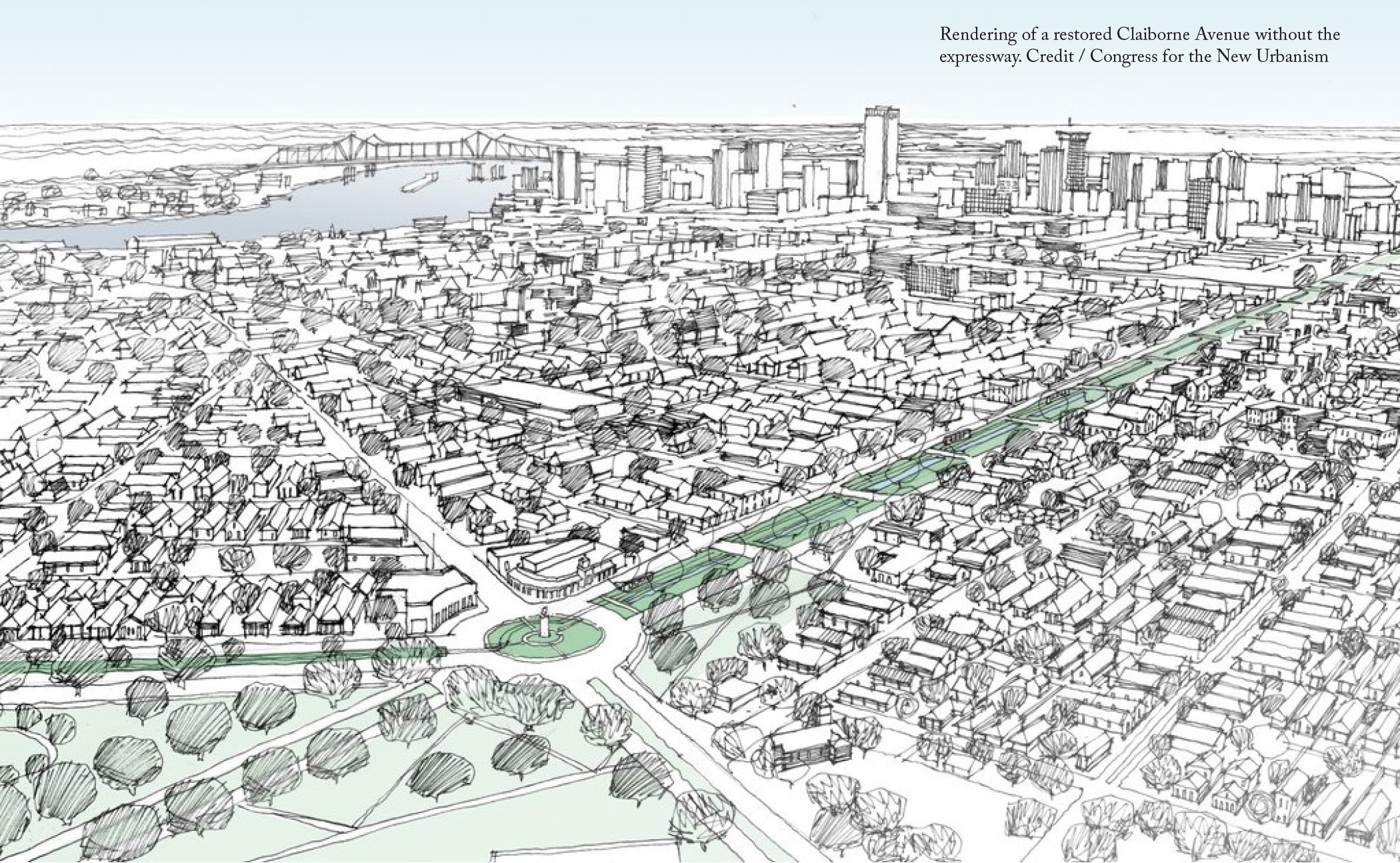
Since 2017, the Claiborne Avenue Alliance—a coalition of residents, property owners, and business leaders dedicated to the thoughtful development of the Claiborne corridor—has led a renewed effort to remove the expressway and rebuild the avenue. The group has set about to document the negative effects the freeway has on adjacent neighborhoods, from severe pollution to the creation of a food desert. The group has also emphasized the positive potential outcomes of removing the freeway. A restored Claiborne Avenue would attract new businesses and jobs to this once-vibrant commercial corridor, as many of the vacant lots adjacent to the highway become redeveloped. All told, nearly 50 acres of land would be reclaimed from the highway’s shadow. The Claiborne Avenue Alliance advocates that the city devote a large portion of this reclaimed land to the creation of affordable housing and commercial spaces. This would address significant community concerns: While many Tremé residents want to see Claiborne Avenue restored, they fear that such an improvement could price them out of the neighborhood.
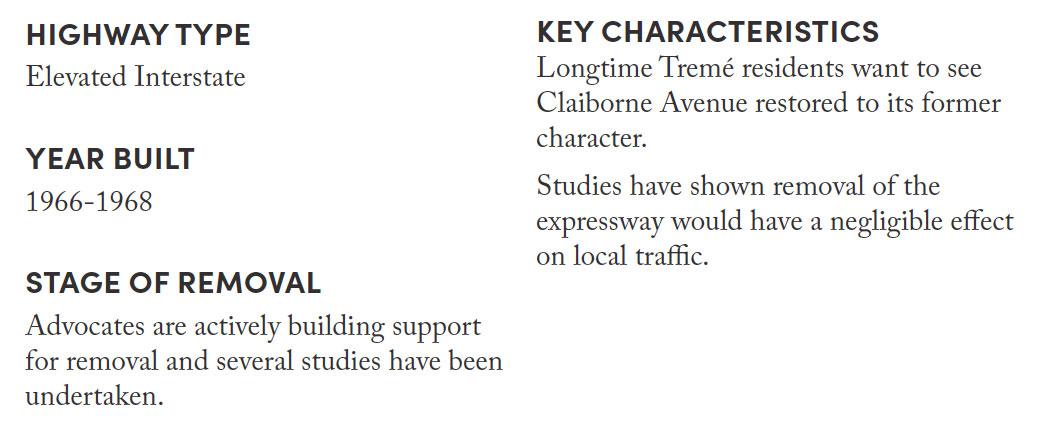
Political traction for the expressway’s removal is again on the rise. Recently, Mayor LaToya Cantrell sent her staff to tour the former site of the Embarcadero Freeway in San Francisco, one of the first elevated freeways in the United States to be converted into a boulevard. City Council president Jason Williams also joined them.
Longtime Tremé residents have made sure to perpetuate conversations around the highway’s removal and the restoration of Claiborne Avenue. Their persistence stems from memories of a great avenue, once an economic and cultural asset for the community, and a vision for the future that provides a similar place for generations to come.
Note: Freeways will be a topic at CNU 27 in Louisville June 12 through 15. Discounted registration is available until May 10th.





